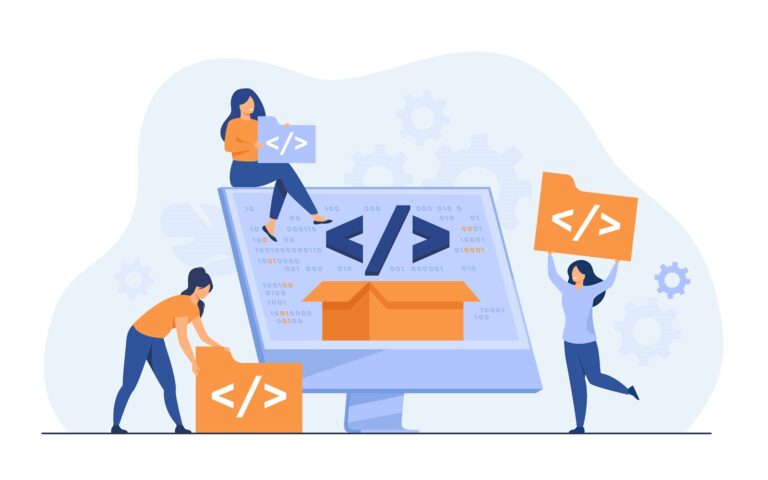How to Enhance Your Productivity Using AI: A Practical Guide
In this comprehensive guide, we explore how Artificial Intelligence can be a game-changer in enhancing productivity within businesses. We walk you through seven key steps – identifying productivity bottlenecks, leveraging AI for task automation, improving communication and collaboration, efficient time management, informed decision-making, enhancing learning and development, and measuring AI’s impact on productivity. As we delve deeper into each step, we examine the essential role AI plays and the innovative tools available for each process. Looking towards the future, we also contemplate the expanding role of AI and its potential to further revolutionize productivity.
I. Introduction: Understanding the Impact of AI on Productivity
Artificial Intelligence has become an integral part of our daily lives. From making product recommendations based on past purchases to using voice assistants to schedule our day, AI is increasingly being deployed in ways that augment our ability to accomplish tasks more efficiently. Its potential to enhance productivity, especially in the business realm, is extraordinary.
To comprehend this, think of productivity as the ratio of output to input. The goal is to maximize output (goods or services produced) while minimizing input (resources such as time, labor, and money). AI can play a significant role here by automating repetitive tasks, providing predictive insights, enhancing decision-making processes, and even creating new jobs that drive innovation. By understanding the potential of AI, businesses and individuals can truly leverage it to optimize productivity.
II. Step 1: Identify Your Productivity Bottlenecks
A. Defining Your Productivity Challenges
Identifying your productivity bottlenecks is the first crucial step towards leveraging AI to enhance productivity. These bottlenecks are aspects of your work or business operations that slow down the overall process, and they can manifest in various forms. They could be routine and mundane tasks that consume too much time, complex tasks that require expert skills, or issues related to decision-making that hinge on interpreting vast amounts of data.
For instance, in a manufacturing business, bottlenecks could arise from equipment downtime or inefficient resource allocation. In a software development environment, bottlenecks may surface due to repetitive code testing or bug-fixing tasks. By clearly defining your productivity challenges, you set the stage for effectively applying AI solutions to address them.
B. Role of AI in Addressing Productivity Issues
Once the productivity bottlenecks have been identified, AI can be strategically deployed to address these issues. For repetitive tasks such as data entry or sorting, AI technologies such as Robotic Process Automation (RPA) can be employed to automate these tasks, freeing up human resources for more strategic roles.
For complex tasks requiring expert skills, AI and machine learning algorithms can be trained to carry out these tasks, often with greater efficiency and accuracy. This is already being seen in areas like healthcare, where AI is used to analyze medical images and detect diseases.
Finally, for decision-making tasks, AI can process and interpret vast amounts of data to provide valuable predictive insights. These insights can significantly enhance the speed and quality of decision-making, leading to improved productivity.
In the next sections, we will dive deeper into how AI can be integrated into your workflow, and the tools that can assist in this integration.
III. Step 2: Explore AI Tools for Task Automation
A. Understanding Task Automation
Task automation can be understood as the process of leveraging technology to reduce or eliminate human involvement in repetitive or mundane tasks. In the context of AI, automation is not only about replacing human effort but enhancing it, thus boosting productivity. With AI-powered automation, tasks can be carried out more quickly, accurately, and sometimes, even round the clock. From email filtering and calendar scheduling to customer service chatbots and content recommendation, AI has a broad range of applications in task automation.
Automation, however, doesn’t imply replacing humans entirely. Instead, it allows humans to focus on more strategic, creative, and decision-centric tasks, thereby increasing overall productivity.
B. Selection of Suitable AI Tools for Automation
When it comes to selecting the right AI tools for automation, the choice depends on your specific productivity bottlenecks, as identified in Step 1. Different AI tools serve different purposes and come with various capabilities. For instance, Robotic Process Automation (RPA) tools can automate repetitive tasks like data entry, while AI chatbots can be useful for automating customer service interactions.
When selecting an AI tool, consider factors such as its ease of use, the complexity of tasks it can handle, its integration capabilities with your existing systems, and, importantly, the cost involved. Remember, the goal is to enhance productivity while ensuring a positive return on investment.
IV. Step 3: Implement AI for Improved Communication and Collaboration
A. The Importance of Effective Communication
In any organization, effective communication is key to productivity. It helps to ensure that everyone is on the same page, fosters a culture of transparency, and drives team alignment towards common goals. However, as teams grow and as remote work becomes more common, maintaining effective communication can become a challenge.
Here’s where AI can make a difference. By automating certain aspects of communication and by providing tools to make communication more efficient, AI can help to enhance both internal and external communication processes.
B. Using AI Tools for Enhanced Collaboration
There is a wide range of AI tools designed to improve collaboration in teams. For instance, AI-powered project management tools can help teams stay organized and meet their deadlines, while AI chatbots can automate the process of scheduling meetings, thus saving time.
AI can also assist in managing and analyzing communication data to provide insights into team performance and dynamics. For instance, AI can help identify communication gaps, points of conflict, or areas where better collaboration is needed.
In the next section, we will delve into how AI can aid in decision-making and predictive analytics, paving the way for more strategic and forward-thinking business operations.
V. Step 4: Use AI for Efficient Time Management
A. Understanding the Importance of Time Management
Time is a finite resource, making its management vital for enhancing productivity. Effective time management allows individuals and teams to work smarter, not harder, enabling them to get more done in less time. It helps prioritize tasks, reduces stress, and contributes to better work-life balance. However, in today’s world of constant digital distractions, managing time effectively can be a challenge.
B. AI Tools for Time Tracking and Optimization
AI can offer a significant helping hand when it comes to time management. There are a variety of AI-powered tools designed to track and optimize time usage. For example, AI-based time tracking tools can automatically track time spent on different tasks, providing insights into where time is being well-spent and where it’s being wasted.
AI can also assist in optimizing your schedule. For instance, AI-powered personal assistants can learn your habits and preferences over time and make intelligent suggestions for your schedule, such as when to schedule meetings, when to set aside time for deep work, and even when to take breaks.
VI. Step 5: Use AI to Improve Decision Making
A. Role of AI in Decision Making
Decision-making is a critical aspect of productivity, particularly in a business context. Making informed, data-driven decisions can significantly improve the efficiency and effectiveness of business operations. However, with the enormous amount of data businesses generate and need to process, manual analysis is often not feasible, or at least, not efficient.
This is where AI comes into play. AI, especially machine learning and predictive analytics, can analyze large volumes of data to uncover patterns, trends, and insights that would be difficult, if not impossible, to identify manually. These insights can then inform business decisions, from strategic planning and resource allocation to customer relationship management and marketing strategies.
B. Tools for AI-Powered Decision Making
There’s a variety of AI-powered tools designed to support decision-making. Predictive analytics tools can help forecast future trends and scenarios based on past data, helping businesses to plan more effectively. AI-powered business intelligence tools can analyze and visualize data, providing actionable insights for decision makers.
For example, AI can be used to predict customer behavior, inform product development, optimize supply chains, and much more. The key is to choose the tools that best match your business needs and integrate them into your processes to enhance decision-making and, ultimately, productivity.
VII. Step 6: Use AI to Enhance Learning and Development
A. The Importance of Continuous Learning
In the fast-paced, ever-changing world of business, continuous learning is no longer a luxury – it’s a necessity. By continually acquiring new knowledge and skills, employees can stay relevant, adaptable, and innovative. This not only benefits their personal career development but also contributes to the overall productivity and competitive advantage of the organization.
B. How AI can Support Learning and Development
AI is increasingly being used to support learning and development in various ways. For one, AI-powered learning platforms can provide personalized learning experiences, adapting content and pacing based on the learner’s progress and performance. This makes learning more engaging, efficient, and effective.
Furthermore, AI can offer intelligent recommendations for learning content based on an employee’s role, career goals, and skills gaps. It can also analyze the effectiveness of training programs and suggest improvements, ensuring that learning and development efforts truly translate into improved job performance.
VIII. Step 7: Measuring the Impact of AI on Productivity
A. Understanding Key Productivity Metrics
To truly understand the impact of AI on productivity, it’s crucial to measure it. This requires understanding key productivity metrics, which can vary depending on the nature of the work and the organization. Common metrics include output per hour, quality of work, completion of key tasks, and employee satisfaction, among others.
B. Using AI to Measure and Improve Productivity
AI can play a significant role in measuring and improving productivity. For example, AI-powered analytics tools can track productivity metrics in real-time, provide insights into trends, and highlight areas for improvement.
Moreover, predictive analytics can help forecast future productivity levels based on various factors, allowing proactive measures to be taken to enhance productivity. AI can also offer recommendations for productivity improvements based on data analysis.
It’s important to remember that while AI can provide valuable insights and suggestions, the implementation of those suggestions still relies on human judgment and decision-making. The goal is to use AI as a tool to augment human capabilities and make productivity improvement efforts more informed, efficient, and effective.
IX. Conclusion
A. Recap of the Steps for Using AI to Enhance Productivity
We’ve navigated through the multifaceted landscape of AI and its role in enhancing productivity. Starting with identifying your productivity bottlenecks, we’ve explored the potential of AI tools for task automation and improving communication and collaboration. We also delved into the importance of efficient time management, bolstered by AI tools, and how AI can aid in better decision-making processes. Furthermore, we recognized the vital role of continuous learning and development, supported by AI, and discussed measuring the impact of AI on productivity using key metrics. These steps represent a comprehensive approach to leveraging AI in your pursuit of heightened productivity.
B. The Future of AI in Boosting Productivity
Looking to the future, AI’s role in boosting productivity is set to expand even further. With continuous advancements in AI technologies, we can expect more sophisticated tools capable of executing more complex tasks, thus freeing up more human time for higher-level work. As AI systems become more autonomous, they can take over routine decision-making, allowing humans to focus on more strategic issues.
AI’s potential in personalized learning and development also promises a future where learning is more targeted and efficient, leading to faster skill acquisition and greater adaptability. Furthermore, the use of AI in productivity measurement will become more nuanced, offering deeper insights into productivity dynamics and more effective strategies for improvement.
However, it’s crucial to approach the future with an understanding that while AI is a powerful tool, it is just that – a tool. The human element in organizations, characterized by creativity, strategic thinking, and emotional intelligence, remains irreplaceable. As we march into the future, the most successful organizations will likely be those that manage to strike a balance, harnessing the power of AI while valuing and developing their human capital.







